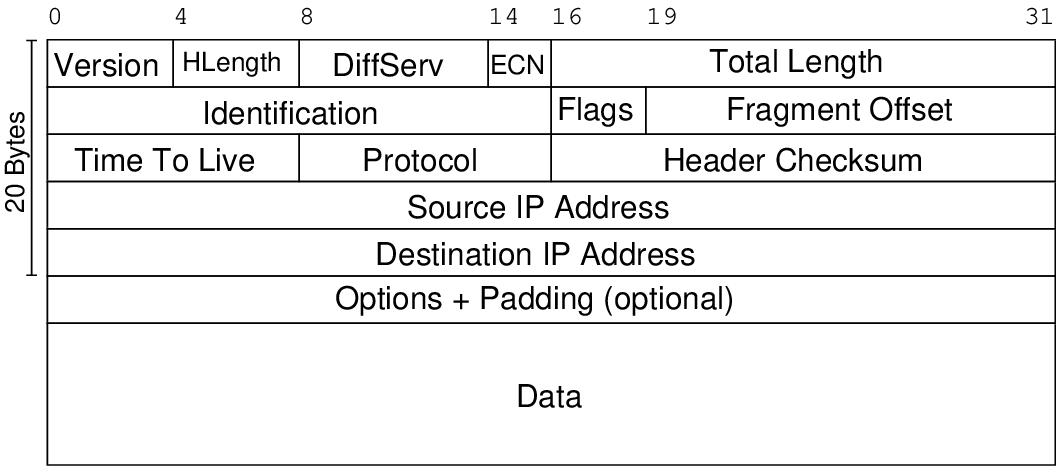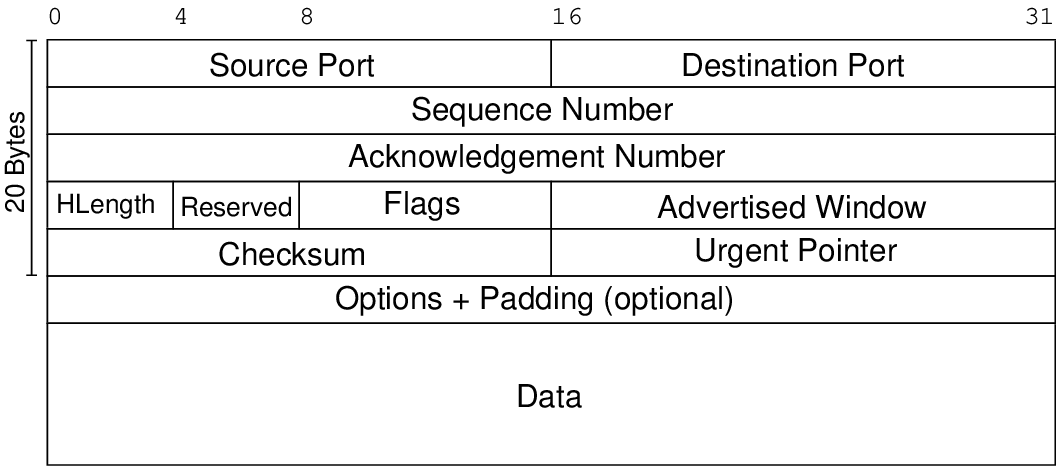Appendix A
Packet Formats and Constants
A.1 Packet Formats
A.2 Port Numbers and Status Codes
IANA and W3C maintain the official list of port numbers, protocol numbers and HTTP status codes.
Port numbers used by common applications include:
- 20
- FTP data transfer
- 21
- FTP connection control
- 22
- SSH, secure remote login
- 23
- TELNET, (unsecure) remote login
- 25
- SMTP, email transfer between servers
- 53
- DNS, domain name lookups
- 67
- DHCP server
- 68
- DHCP client
- 80
- HTTP, web servers
- 110
- POP3, client access to email
- 123
- NTP, network time
- 443
- HTTPS, web servers with secure access
- 520
- RIP, routing protocol
- 631
- IPP, Internet printing
- 1503
- Windows Live Messenger
- 1512
- WINS, Windows naming service
- 3306
- MySQL database server
- 3723
- Blizzard games
- 5060
- SIP, voice/video signalling
- 5190
- ICQ, instant messaging
- 8080
- HTTP proxy server
Protocol numbers for commonly used transport protocols include:
- 1
- ICMP
- 2
- IGMP
- 6
- TCP
- 17
- UDP
- 33
- DCCP
- 41
- IPv6 encapsulation
- 47
- GRE
- 89
- OSPF
Status codes and their meaning for common HTTP responses include:
- 100 Continue
- Client should continue to sent the request
- 200 Ok
- Requested content is included in response
- 301 Moved Permanently
- This and all future requests should be redirected to the given URL
- 304 Not Modified
- Requested content has not been modified since last access
- 401 Unauthorized
- Requested content requires authentication that has not been provided or is incorrect
- 403 Forbidden
- Request is ok, but not allowed to access the requested content
- 404 Not Found
- Requested content could not be found on server
- 503 Service Unavailable
- Requested server is currently unavailable



